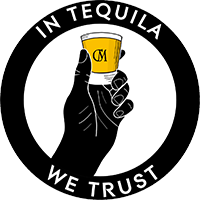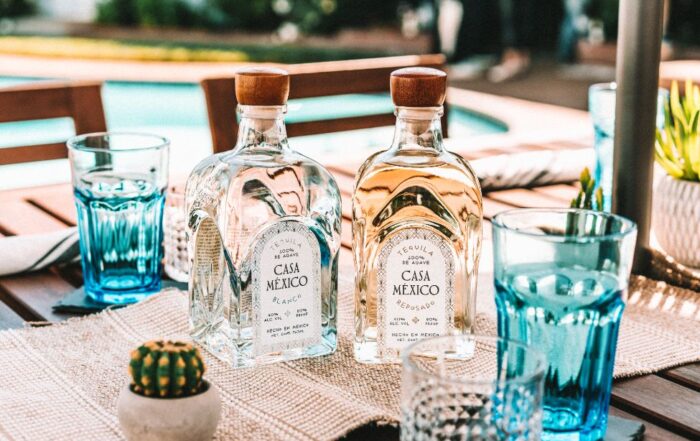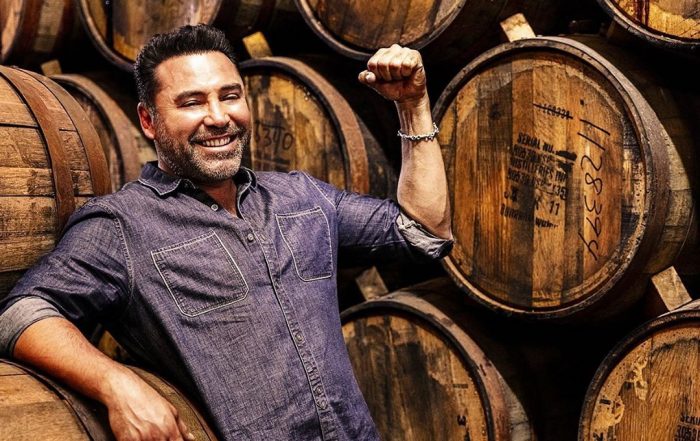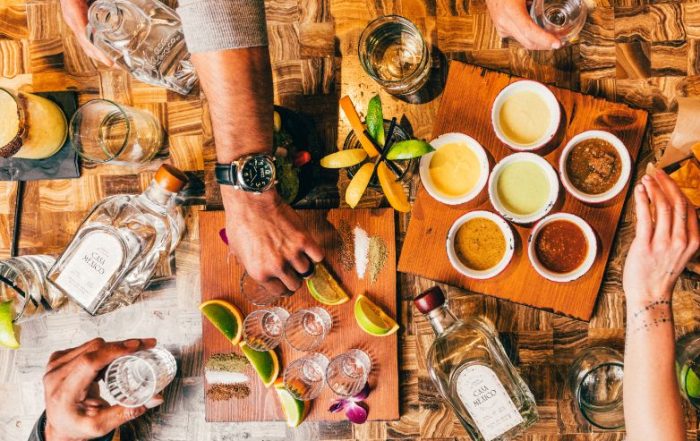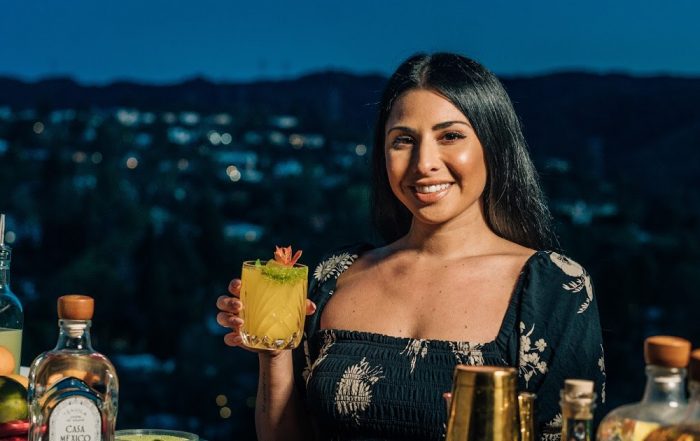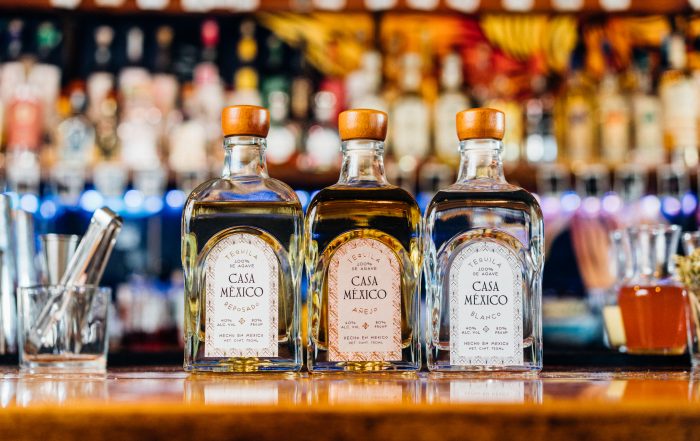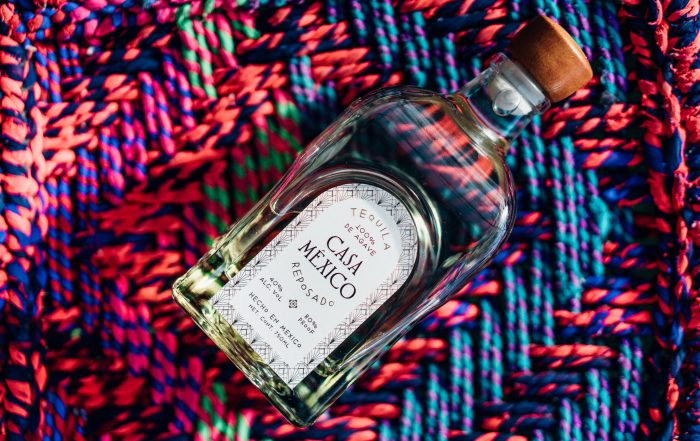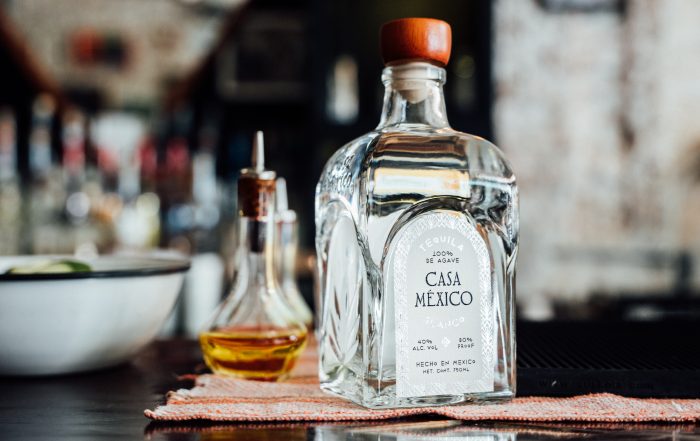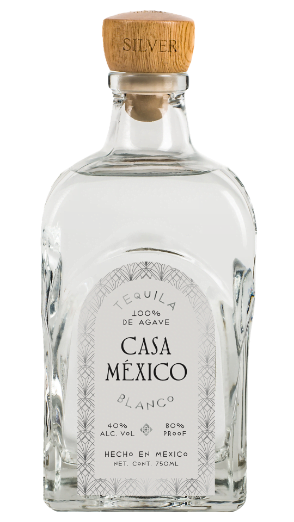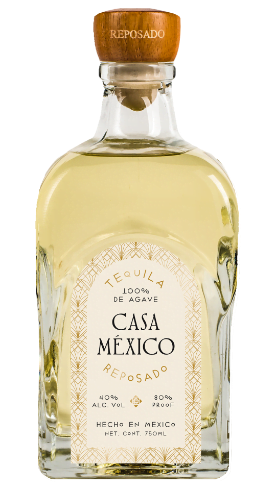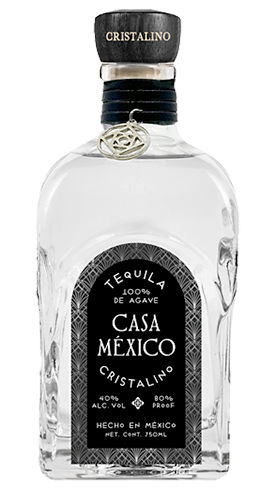The History of Tequila in North America Part 2: 1700 – Present Day
The History of Tequila in North America Part 2: 1700 – Present Day
If you didn’t get a chance, check out “The History of Tequila in North America Part 1” right here. Tequila has a rich history in North America, and in this blog, we’re going to cover the history of Tequila from 1700 to present day.
The 1700s: The Ban of Spirits Leads to Underground Production
In the 1700s, a newly opened port on the Pacific Ocean named San Blas helped aid in mezcal’s popularity. It was heavily exported because its reputation as a quality spirit was growing, even into central Mexico. Unfortunately, in 1785, the production of all spirits, including mezcal, was prohibited by Charles III because he wanted to favor Spanish wines and spirits. Of course, this only stopped the public production of mezcal; production continued underground, literally. The native population began to bake the agave underground, a practice that continues in the present day. This ban didn’t lift until around 1792-1795 when the newly appointed King Ferdinand IV realized that prohibition wouldn’t stop production, so he decided to heavily tax the product instead.
During the War of Independence, mezcal and tequila declined in popularity, not because of their quality but because Acapulco’s port replaced San Blas as the Pacific Ocean’s principal port. After 1821, when Mexico gained independence, tequila rose in popularity again because Spanish products were less attainable.
The first legally licensed tequila manufacturer was none other than Jose Antonio Cuervo (yes, like Tequila). He obtained the rights to cultivate a parcel of land from the King of Spain in 1758. The property, dubbed the “hacienda Cofradia de las Animas” from Vicente de Saldivar, had already been used to run a private distillery. In 1795, Jose’s son, Jose Maria Cuervo, obtained a license to produce mezcal wine from the King of Spain, thus founding the first official Mexican distillery. Jose Cuervo’s distillery was very successful, and when he died, he left his holdings to his son, Jose Ignacio, and daughter Maria Magdalena. When Mary Magdalena wed Vicente Albino Rojas, the property was used as her dowry. A dowry is property or money on the bride’s side of the family that is essentially given to the husband on their wedding day. (Does that make Mary Magdalena a sugar mama?) Upon acquiring Mary’s property, Vicente changed the name to “La Rojeña’ and amped up production.
Fun fact: The University of Guadalajara was partially paid for by taxes on mezcal wines.
The 1800s: Tequila is First Bottled and Demand Skyrockets
During the war, soldiers on all sides were consuming large amounts of tequila. Agave plants were also being exported to Europe and the colonies as ornamental plants, but only some would thrive in the local ecosystems. Americans were first exposed to tequila during the war in the 1840s, but without the railroad in place yet, tequila couldn’t be heavily distributed.
Around 1810-1820, Jose Castaneda founded La Antigua Cruz, which Don Cenobio Sauza acquired in 1873. Sauza changed the name immediately to La Preservancia in 1888, and it’s held on to that name ever since. It’s rumored that tequila was first exported to the United States in 1873 when Sauza sold three barrels to El Paso del Norte. Sauza was notorious for his “badass” demeanor and began policing his plantation by himself (with the help of a few employees) to keep bandits away. Before his untimely death in 1906, he purchased 13 more distilleries and dozens of agave fields for his personal use. Present-day, the family owns 300 agave plantations and is the second-largest tequila manufacturer. In 1976, the family sold the company to the Spanish corporation, Pedro Domecq.
Fun fact: In the 1800s, it was common to name the distilleries after their owners, adding “eña” to the name, such as La Floreña and La Martineña. Later on, the naming of distilleries changed to reflect values or convictions, such as La Preservancia (Perseverance).
During the 1800s, many other distilleries were established; some thrived, and many failed. In 1861, Tequila Herradura (horseshoe) was founded by Feliciano Romo and is present-day a company museum. Herradura was the first to produce reposado tequila and always has only made 100% agave tequila.
In the 1860s and 1870s, Destiladora de Occidente and Tequila Orendain were established. Today, Tequila Orendain is the third-largest exporter of mixto tequilas.
Fun fact: Tequilas that say 100% Agave on the label are just that, 100% Agave. Mixtos are required to be made from only 51% Blue Agave sugars. The other 49% can be made from any different type of sugar, like high fructose corn syrup. Mixto producers usually add colorings, flavorings, and thickeners to make it look like a premium tequila. We do not produce mixto tequilas at Casa Mexico Tequila; we have only 100% agave tequila. In other words, we’re the real deal.
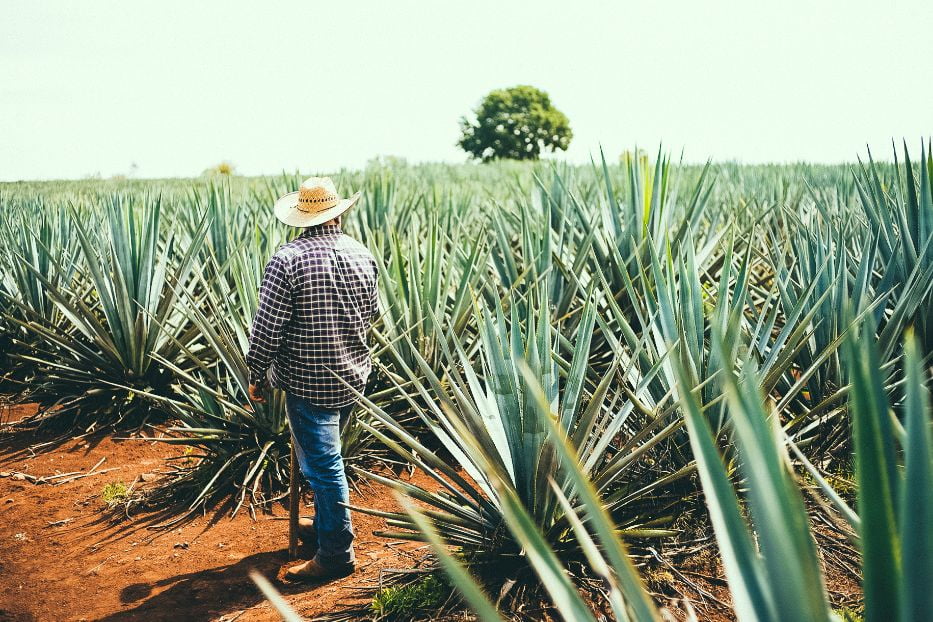
By the 1880s, railroads had been established, which fueled tequila’s spread further into North America. By 1893, “mezcal brandy” was a regular export into the United States. It even won an award at the historic Chicago World Fair that year.
The stability in Mexico (the Porfiriato period) during the late 1800s fueled tequila’s popularity and growth.
Fun fact: The Porfiriato is a term given to the period when General Porfirio Díaz ruled Mexico as president in the late 19th and early 20th centuries, coined by Mexican historian Daniel Cosío Villegas. Porfirio Díaz is known for his long-standing presidency and strong centralized state in Mexico. His elitist and oligarchical policies favored foreign investors and wealthy landowners, culminating in an economic crisis. In 1911, he was removed as a result of the Mexican Revolution.
Distilleries in Jalisco were slowly transitioning from producing aguardiente to tequila to meet demand. Around this time, the product that had many names simply was dubbed “tequila” in the same sense that brandy made in a specific French region is known as cognac. In 1854, a reference to mezcal wine as “tequila” was recorded by the French traveler Ernest de Vigneaux, but it would be a few more decades before this name was common.
Fun fact: Aguardiente translates to firewater, which most Americans nicknamed whiskey. But instead of whiskey, it’s sugarcane liquor – similar to rum, but more potent and not as sweet.
Three MILLION agave plants. That’s how many plants Cuervo had planted and grown by mid-century. That’s a lot of tequila! Cuervo died before railroads were built, and Jesus Flores took over the distillery and property. Around this time, the distillery began bottling tequila, the first to do so (everyone was still using barrels).
But by the end of the century, most distilleries were bottling tequila to increase sales. As modernization was beginning (railroads and technology advances), the number of distilleries in Jalisco grew to 100, but then dropped to 32 when the Diaz Regime (the President during the Porfiriato period we mentioned earlier) collapsed. Mexico was thrown into instability and turmoil.
Flores decided to move the distillery to a larger property that was closer to the newly built railroad. The new site was called La Constancia. By 1880, Cuervo sold 10,000 barrels of its tequila in Guadalajara alone. But in 1900, after Flores died, his widow quickly married the administrator of the distillery, Jose Cuervo Labastiida, and the name “Jose Cuervo” was reinstated. Now the property had four million agave plants. In the present day, La Rojeña (Cuervo) is still the most extensive tequila producer with an enormous export market.
The 1900s: Mexican Patriotism Continues the Growth and Popularity of Tequila
During the Revolution in the early 1900s, tequila became a symbol of patriotism and national pride. Tequila went hand in hand with the “badass” rebels and gun-slinging heroes (or villains!) of that time. Simultaneously, distilleries conveniently “forgot” about how the Revolutionary Army raided their plants and confiscated their tequila. Most owners were never repaid, but many of the larger plants suffered when the government redistributed their agave-planted land to peasants later on.
Tequila Makes a Comeback after the Great Depression
By 1929, only eight distillers left in Mexico were left to suffer through the Great Depression. Post-Revolutionary leaders, such as Victoriano Herta, traded tequila for French cognacs. But tequila pushed through, making a comeback because of its popularity amongst the Mexican people.
It was also around this time that modern techniques, such as yeast cultivation, were introduced. When peace returned after the Great Depression, the industry grew immensely. When Prohibition was introduced into the United States, tequila’s popularity grew even further when it was smuggled across the US/Mexico border.
Distillers Tarnish the Reputation of Tequila by Using Non-Agave Sugars
In the 1930s, distillers began to use non-agave sugars, such as cane sugar, fermentation, and the sugar from agave. This would prove to be a fatal mistake and was a massive blow to the entire industry, negatively tarnishing its reputation for decades.
Tequila Rises in Popularity Again Because European Spirits are Exported Less Frequently
During WWII, production and demand for tequila increased due to European spirits declining in inventory; between 1940-50, agave fields in Mexico expanded by 110%. In 1948, tequila exports fell when national consumption grew yet again (thanks to the portrayal of tequila as a machismo drink of heroic rancheros). Despite the slump in exports, the increased demand during the war meant more money coming in, so many distilleries upgraded their facilities and modernized their practices.
Thanks to agricultural reform under President Lopez Mateos, 30 million acres of land was parceled out to farmers, some of those going to maguey farmers across the country.
As early as 1944, the Mexican government decided that any product labeled as “tequila” must be made by distilling agave in Jalisco. These standards were laid out between 1944-1947, and they have been revised and upgraded since then.
Fun fact: Sometime between 1930 and 1955, the margarita was born in Mexico, becoming the most popular mixed drink in bars for a few decades.
In 1964, distillers were legally allowed to use up to 30% of sugars other than agave, which then climbed to 49%. The blander product, created by non-agave sugars, was favored by Americans and boosted export sales.
More current efforts to regulate the tequila industry came about between the 1960s-70s, with two organized groups formed during WWI and WWII, which would eventually evolve into modern society’s regulatory organizations.
The 1968 Olympic Games in Mexico Gave Tequila Worldwide Exposure
The Olympic games also propelled tourism from the United States to Mexico. When the baby boomer generation visited, they discovered premium tequila brands that set it apart from cheaper products imported into the United States. This helped transform tequila from a “party drink” into something more sophisticated, much like wine.
In 1974, the first set of regulations setting out where tequila could be produced were published but later amended in 1976 when the first NORMA was released. It was also around this time that tequila gained worldwide recognition and acceptance as a product originating in Mexico – the Appellation of Origin was published in 1977.
What is a NOM (formerly known as NORMA)? The Official Mexican Standard for Tequila NOM-006-SCFI-2005 Alcoholic Beverages – Tequila – Specifications defines a NOM as:
This NOM applies to all processes and activities related to the supply of agave, production, bottling, marketing, information, and business practices linked to the distilled alcoholic beverage known as Tequila, according to the specifications of this NOM. Said beverage is subject to the process detailed below, using Agave of the species tequilana weber blue variety, grown in the federal states and municipalities indicated in the Declaration.
Furthermore, this NOM establishes the technical specifications and legal requirements for the protection of the Appellation of Origin of “Tequila,” per the current General Declaration of Protection of the Appellation of Origin of “Tequila,” the Law, the Industrial Property Law, the Federal Consumer Protection Law and other related legal provisions.
In the 1980s, Chinaco was released, the first premium tequila sold in the United States.
Other Countries Attempt to Imitate Tequila
In 1994, the Tequila Regulatory Council (Consejo Regulador del Tequila, or CRT) was founded to oversee production, quality, and industry standards.
Two years later, Mexico signed an international agreement for all countries to recognize tequila as a product that can only be produced in certain regions of Mexico. The EU then signed a trade accord in 1997, recognizing Mexico as the sole producer of tequila.
South Africa allowed a distillery to open and manufacture a product they called “tequila.” But a South African firm in Graaff Reinet announced that it would also open a tequila plant in 1998, using locally grown blue agave from Mexican stock that had invaded their ecosystem. Although they called it tequila, it was only 10% agave, with the remainder being other inferior alcohols and sugars.
Protests from the Mexican government halted the plans of Reinet Distillers, and they renamed their product “Spirit of Agave” (not quite as catchy as tequila).
Spain and Japan have also attempted to produce tequila. In response to this, Mexican tequila manufacturers have opened trade offices in Madrid and Washington to protect tequila and promote it in foreign markets.
To guarantee tequila’s quality, the Normas Oficial Mexicana (NOM) was established in 1978 to regulate all agricultural, industrial, and commercial processes related to tequila.
Only five regions in Mexico can legally make tequila. Most are within the northwest part of the country and 100 miles or less from Guadalajara:
- Tequila
- Tepatitlan
- Guadalajara
- Amatitan
- Arandas
- Arenal
- Capilla de Guadalupe
- Zapotlanejo and Atotonilco)
The rest are in the states of:
- Nayarit
- Guanajuato
- Michoacan
- Tamaulipas
These areas are all dry with loamy, clay soils. They are mostly plateaus and highlands. Specifically in Jalisco’s Tequila region, the fields crowd the slopes of two extinct volcanoes.
Tequila Today
Americans are the largest consumers of tequila. Since the 1990s, tequila consumption has risen again in Mexico, and internal sales almost equaled exports. Although the United States is the largest consumer (and has been for many years), Mexican consumption has grown apace, and internal sales almost equaled exports by 1997.
The Consejo Regulador del Tequila (Tequila Regulatory Council) reported 1,377 registered domestically bottled brands from 150 producers as of November 2013. Two hundred eighty-five other brands from 34 producers are bottled internationally.
LATEST BLOG
Celebrate National Margarita Day with Casa México Tequila
Here at Casa México we’re getting ready to celebrate one of our most favorite days of the year: National Margarita Day. Every February 22nd we break out our finest margarita glasses, cue up the limes and line up our premium tequilas. It’s like we were born for this day.
888.411.9530 | [email protected] | Copyright 2024 Casa Mexico Tequila. All Rights Reserved. | Privacy Policy | California Privacy Policy | Accessibility Statement
888.411.9530 | [email protected] | Copyright 2024 Casa Mexico Tequila. All Rights Reserved. | Privacy Policy | California Privacy Policy | Accessibility Statement
